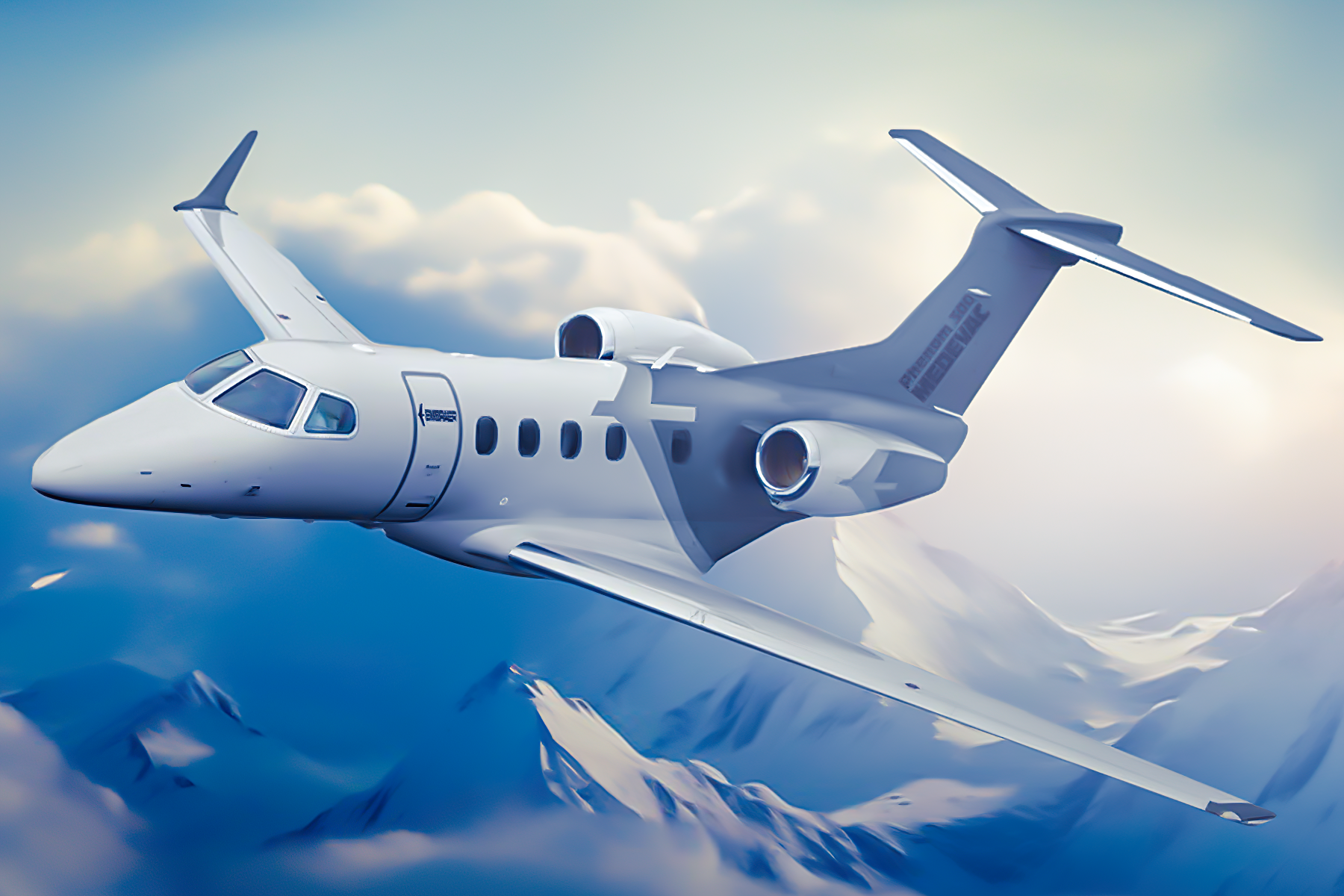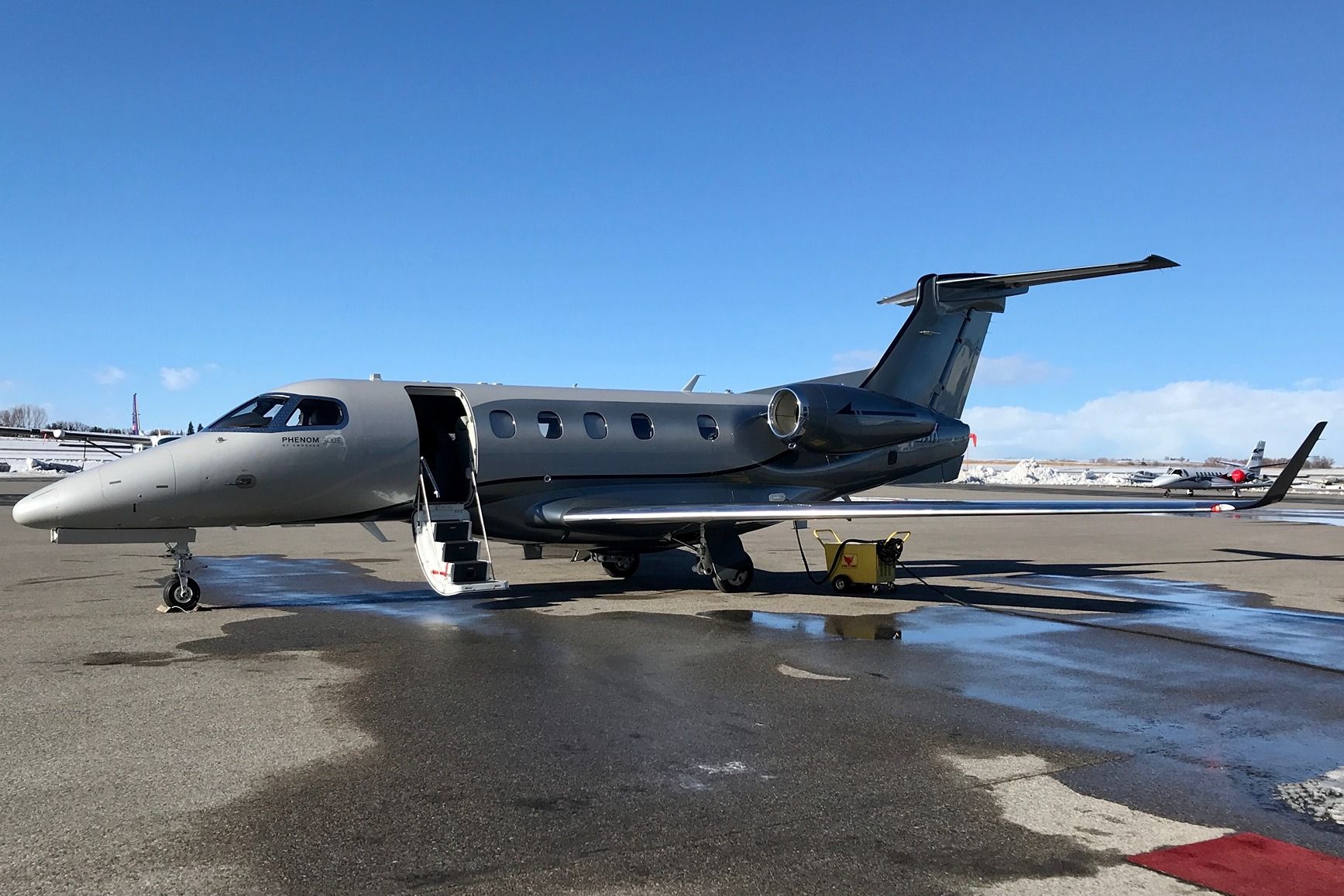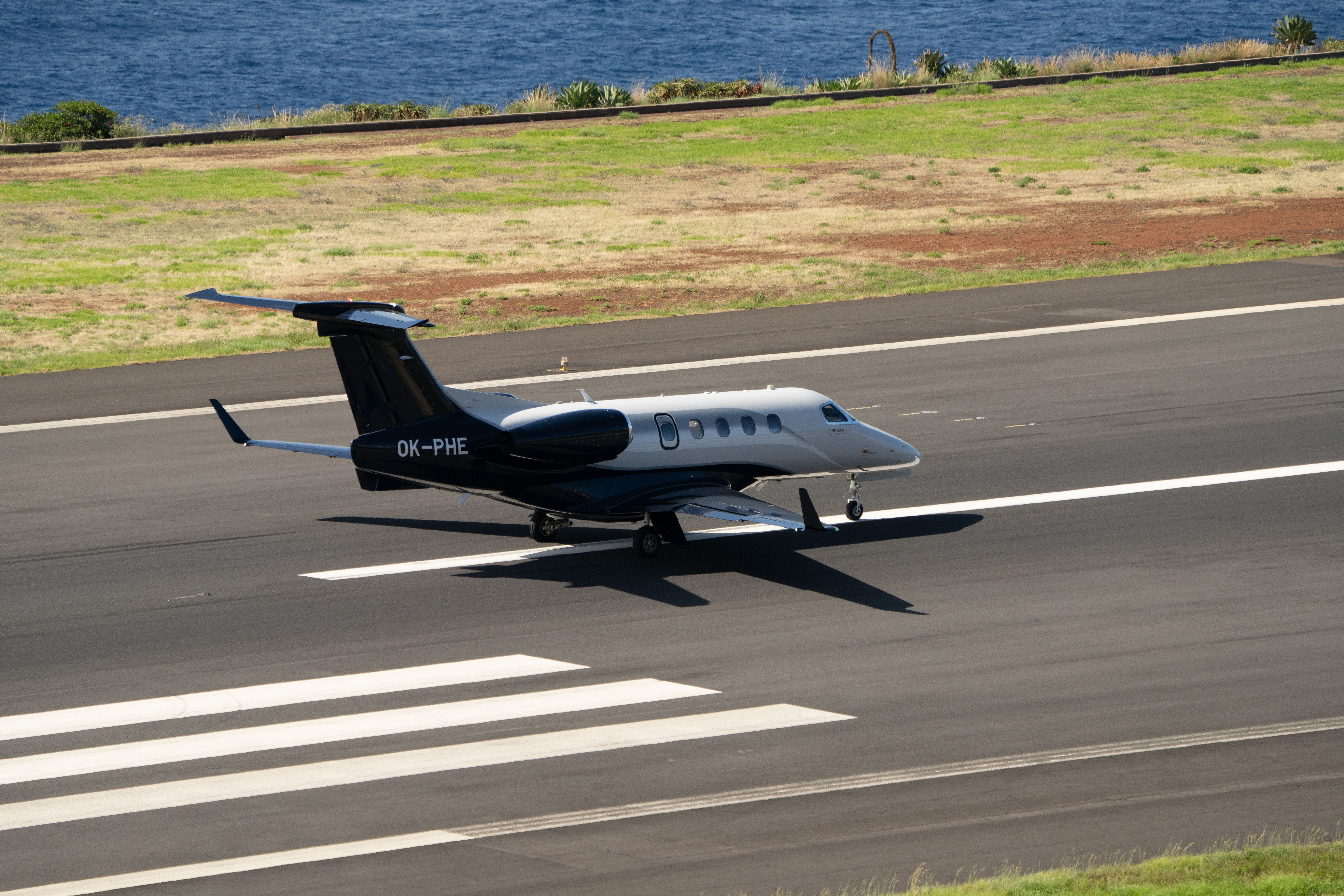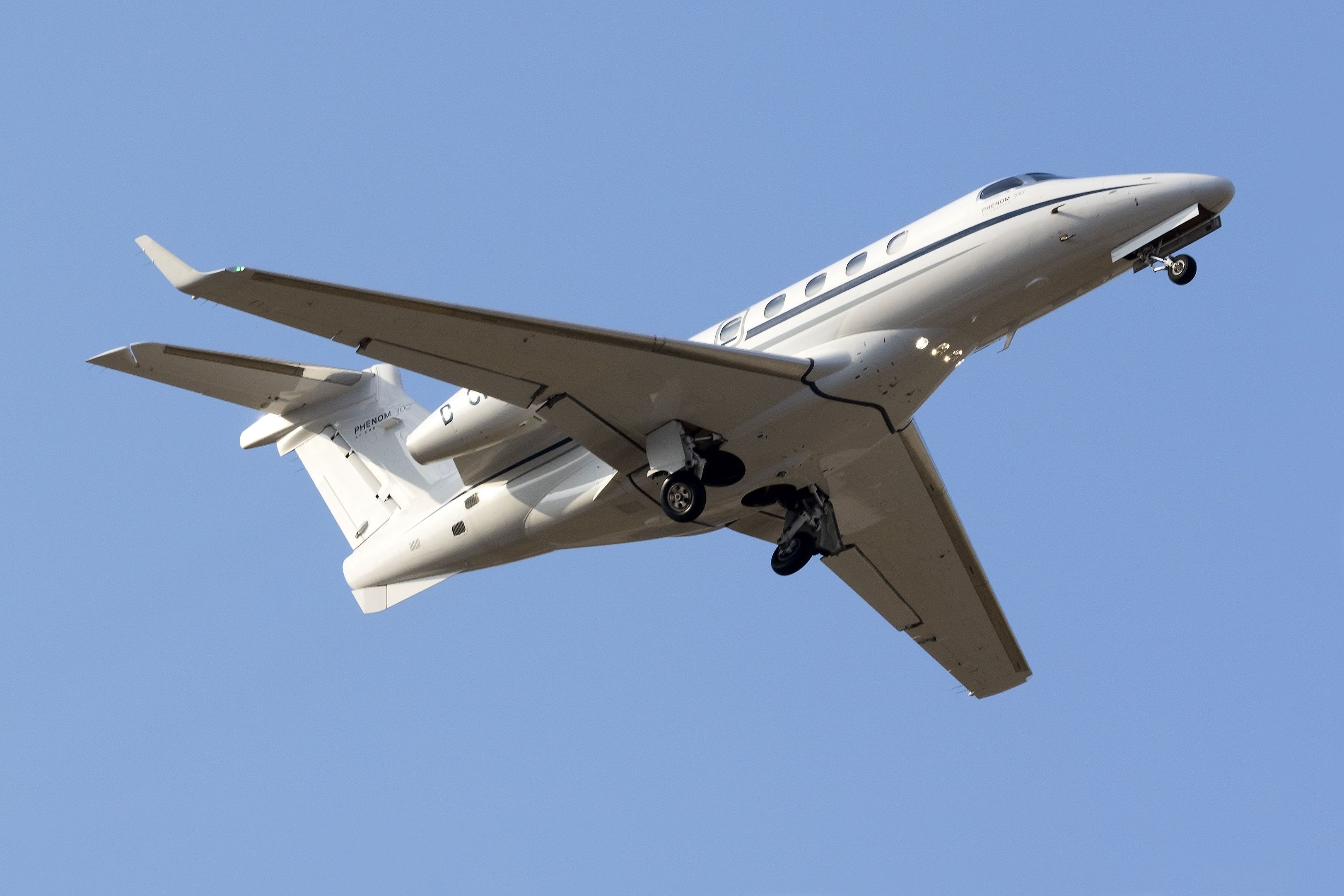Summary
- Phenom 300E sets the standard with a 2,010 nautical miles range, surpassing competitors like the Pilatus PC-24.
- Aircraft’s design features, such as fly-by-wire brakes, assist in taking off from short runways at smaller airports.
- Embraer’s latest upgrades to the Phenom 300 include higher thrust engines, higher cruise speed, and increased range.
Business jets provide their operators with the ultimate flexibility when traveling. Travelers can take off from and arrive at most airports and do so when they please. However, different sizes and variants of private jets provide different benefits. Because of this, business jets are typically broken down into different classes, ranging from very light business jets that can hold five to seven passengers to ultra-long-range business jets that can fly over 7,000 nautical miles (8,055 miles).
One unique class of private jets is the light business jet. These business jets can hold up to ten passengers and are usually around 50 feet long. Many operators choose to utilize light business jets due to their cheap initial cost and lower operating costs. Light business jets also have a relatively high speed and can land on shorter runways, allowing access to airports across the world.

Related
Best-Selling Business Jet: A Look At The Embraer Phenom 300’s Specifications
Over 700 Phenom 300s have been produced since its introduction.
However, one downside of light business jets is their range. Due to their small size, light business jets typically cannot hold large amounts of fuel, meaning their range usually maxes out at 2,000 nautical miles (2,301 miles). However, the Embraer Phenom 300E hits the maximum range in this class, where it tops out at 2,010 nautical miles (2,313 miles). Let’s take a closer look at the Embraer Phenom 300E and how this business jet came to be.
Brief history
The Embraer Phenom 300E is the latest, upgraded version of the Embraer Phenom 300 family of aircraft. The original Phenom 300 was first developed from another Embraer business jet, the Embraer Phenom 100. Embraer felt it could expand the Phenom 100 into a larger aircraft and satisfy a different market.
Because of this, Embraer began developing a slightly larger business jet in the early 2010s, which would eventually become the Phenom 300. The aircraft began as a stretched version of the Phenom 100, but Embraer eventually developed a clean-sheet aircraft instead.
The newly designed Embraer Phenom 300 flew for the first time in April 2008. An extensive flight testing program was initiated where three Phenom 300 prototypes flew for over 1,400 flight hours. The Federal Aviation Association (FAA) awarded Embraer the type certificate for the Phenom 300 in December 2009. Later that month, Embraer began deliveries of the aircraft.
Photo: Austin Deppe | Shutterstock
Since its introduction, Embraer has made several upgraded versions of the aircraft. In 2018, Embraer introduced the first major variant of the Phenom 300 and designated the upgraded aircraft the Phenom 300E. This upgrade included new interior styling, the new Garmin G3000 avionics system, and a ground power mode for the aircraft’s engines, which allowed the power to be turned to idle while the aircraft was on the ground. This simulates the use of an auxiliary power unit (APU). The most recent upgrade of the Phenom 300 occurred in 2020, after it received certification from Brazil’s National Civil Aviation Agency (ANAC), the FAA, and the European Aviation Safety Agency (EASA). The upgraded variant introduced new engines with higher thrust, which led to a higher cruise speed and increased range. Other avionics improvements, including predictive wind shear awareness and a stabilized approach system, were implemented.
Notable design features
As previously mentioned, the Phenom 300 was originally intended to be a stretched version of the Phenom 100. However, Embraer opted to develop a clean sheet aircraft instead. Even so, Embraer utilized many systems and design aspects from the Phenom 100 when it developed the Phenom 300.
The airframe, which is made mostly from aluminum alloys and composite materials, is rated to be stronger than the Phenom 100’s, due to its higher operating altitude. The aircraft is equipped with a swept wing and a movable horizontal stabilizer on its tail. This allows pilots to adjust the trim settings depending on the status of the take-off or landing. The Phenom 300 is also equipped with fly-by-wire brakes instead of thrust reversers. These design features allow the aircraft to take off from shorter runways in smaller airports, like London City Airport (LCY), which requires a steep approach.
Photo: Photosbypatrik | Shutterstock
The Phenom 300E utilizes two Pratt & Whitney PW525E1 turbofan engines, which provide nearly 3,500 pounds of force for thrust. These assist with the aircraft’s ability to take off and land from shorter distances. Overall, the aircraft can take off on runways that are just over 3,200 feet long, and it can land on runways that are just over 2,200 feet long.
The aircraft can hold a maximum of nine passengers in addition to the two pilots. The interior of the aircraft can be fitted with rotating seats, a couch, or a galley. The cabin of the aircraft has the following measurements:
- Cabin length: 17.2 feet
- Cabin height: 4.9 feet
- Cabin width: 5.1 feet
Inside the cockpit, the Phenom 300E utilizes the Garmin G3000 avionics suite. This avionics system utilizes three large touchscreen displays. Additional upgrades to the aircraft include wind shear awareness, stabilized approach, and emergency descent mode.
Maximum range and other performance specifications
The Phenom 300E has the longest range of any currently-produced light business jet. It can reach a maximum range of 2,010 nautical miles (2,313 miles). The range was extended during the most recent Phenom 300 upgrade when it was upgraded to the Phenom 300E. This allowed the aircraft to narrowly beat out one of its competitors, the Pilatus PC-24 aircraft, which has a range of 2,000 nautical miles (2,300 miles).
Photo: InsectWorld | Shutterstock
The aircraft also has other competitive measures:
|
Length |
51 feet four inches |
|---|---|
|
Height |
16 feet nine inches |
|
Wingspan |
52 feet two inches |
|
Maximum takeoff weight (MTOW) |
18,551 pounds |
|
Maximum speed |
464 knots (534 miles per hour) |
|
Service ceiling |
45,000 feet |




